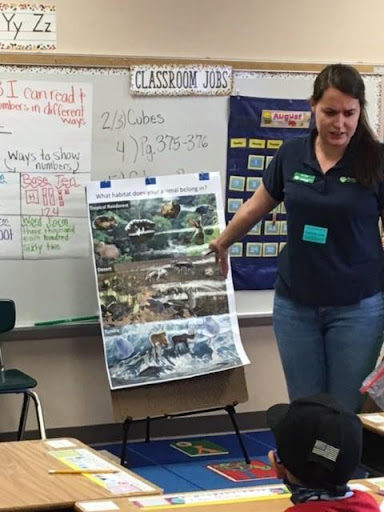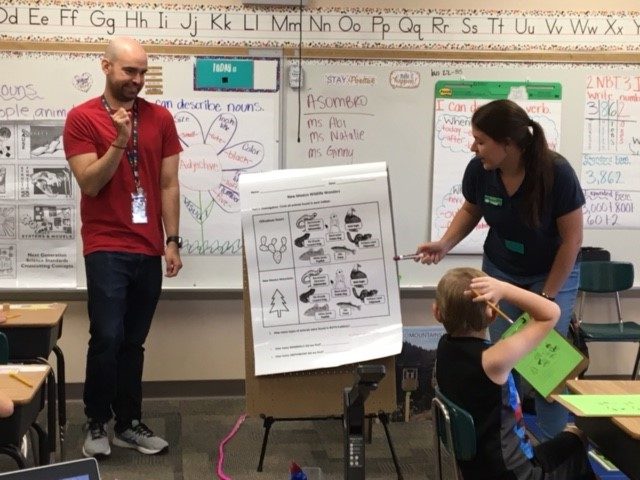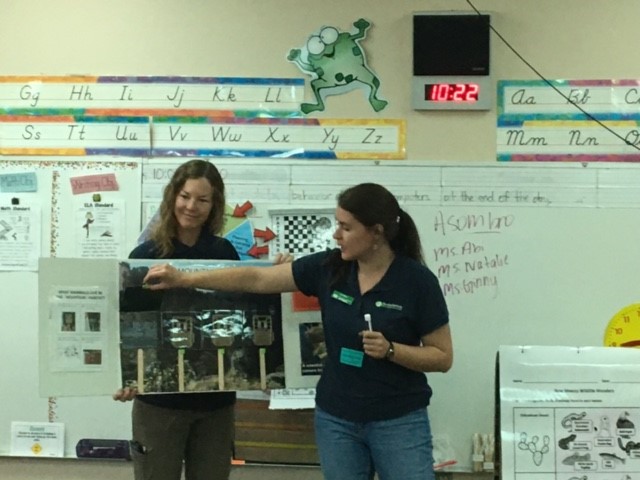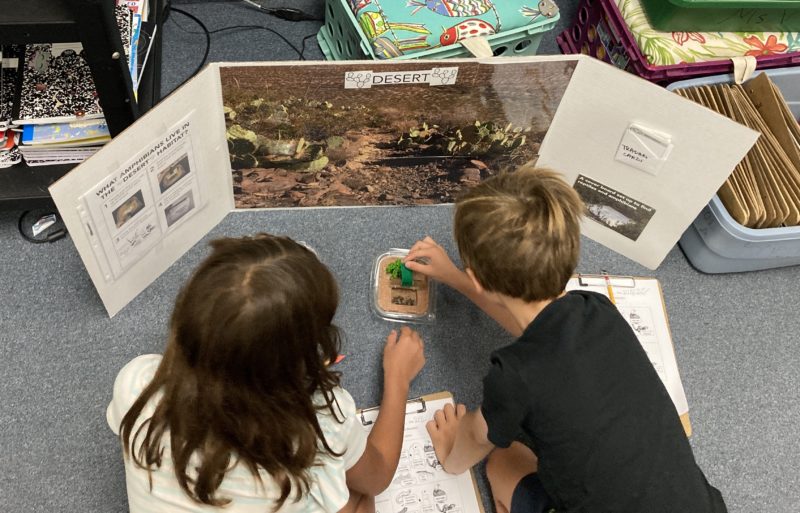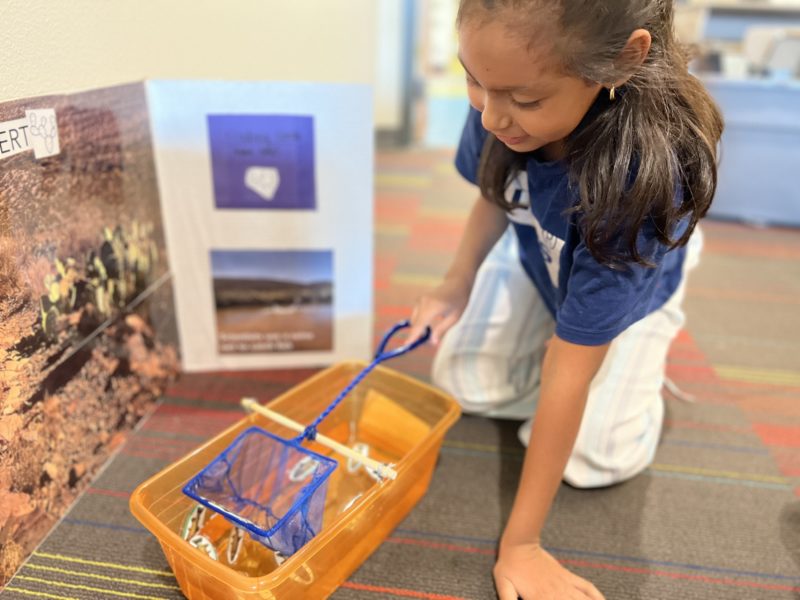Following is a selected project highlight from the Share with Wildlife mission to assist all New Mexico wildlife in need, no matter what species.
Teaching Students How Wildlife Researchers Study Wildlife
How do scientists gather data on different animals? What are some species found in the region of New Mexico we live in? What about animals that live in nearby mountainous areas? These are some of the questions around which educators with the Asombro Institute for Science Education have developed a new environmental education module (i.e., multiple lessons) and that Asombro will be working with second grade students in southern New Mexico to answer. The module includes three lessons. Two focus on surveying the students’ schoolyards to determine which species of wildlife are present based on direct detections and animal sign and determining what would need to be added to the schoolyard for one of the focal species from the classsroom lesson to be able to survive there. The classroom lesson focuses on introducing the students to several Species of Greatest Conservation Need found in the Chihuahuan Desert and Arizona/New Mexico Mountains ecoregions in New Mexico and approaches that wildlife biologists use to study these species.
Asombro has started implementing the new lessons with second graders, including students in Las Cruces. They will continue to modify the activities as needed based on feedback from the students’ teachers. Preliminary feedback from August 2022 is very positive; teachers strongly agreed that the module increased students’ science content knowledge, helped students better use scientific practices, and got students excited about science. Teachers also indicated that no improvements to the lessons were needed. The hands-on activities that Asombro has developed are a creative way to get students thinking about and looking for wildlife and considering the importance of protecting the areas that wildlife need to survive without the complications associated with field trips and taking students off school property. These lessons should make for an excellent addition to the growing portfolio of science-related activities that Asombro offers for students in southern New Mexico.

